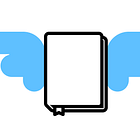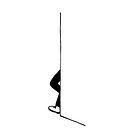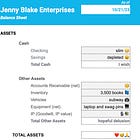📚 The Untold Story of Book(s) Sales, Part Two
Additional resources for aspiring authors—and the readers who love them 🤓
💸 Free Time is still $0.99 on Kindle through Labor Day!
Catch up on part one here first, focused on excerpts ’s essay in the latest issue of The Author’s Guild Bulletin (Spring-Summer 2025), “The Cruelty—and Possibilities—of 21st Century Book Promotion: Marketing strategies for the 99.99 percent of authors who aren’t bestsellers.” Read the full article here (PDF) »
In it, he includes a remarkably transparent, detailed account of promoting his latest book, The Untold Story of Books: A Writer’s History of Publishing and his related Substack, . So many little bits and bobs occurred to me after posting part one that I couldn’t resist adding them here in a follow-up! Catch up here first:
📊 Update on the section about Amazon rankings
From part one, here’s Castleman:
“Amazon lists around 15 million trade titles in English (plus 2 million more every year). Books with rankings better (i.e., lower) than 1,500,000 are selling in the top 10 percent of Amazon’s vast catalogue. If your book ranks better than No. 150,000, you’re in the top 1 percent. The Untold Story of Books’ Amazon rank topped out at No. 21,288. On that one blessed day, it ranked in the top one-quarter of 1 percent of titles.”
You can get a rough sense of how Amazon rankings correlate to the number of books sold each day via “calculators” on sites like this one from Rob Eagar.
Eagar’s Estimated Amazon Sales Ranking Calculator for Print Copies Sold:
Ranking < 10 = 1,000 books sold per day
< 100 = 300
< 250 = 200
< 1,000 = 70
< 2,500 = 50
< 5,000 = 25
< 10,000 = 10
< 100,000 = 1
< 150,000+ = Less than 1 book sold per day
< 500,000+ = Less than 1 book sold per month
🔎 A Few More Book Sales Case Studies
Take with a heaping grain of salt, because every book topic, industry, timeline, etc. is different
In her paywalled post, shares remarkably transparent “Sales figures for all five of my books.” If you become a paid subscriber to her Substack, , you will also appreciate the follow-up post, “Your juiciest questions about my sales numbers, answered,” and for all, her epic round-up of those like me who followed suit, “Authors share exactly how much they’re making.”
You can get a snapshot of my exact sales figures (and advances) for my three books in a Free Time podcast episode from February 2023, “164: Let’s Talk Royalties—re: Publishing Options (Part Two).” The gist:
Life After College (Running Press, 2011): $15K advance for an early blog-to-book deal inked in 2010, with 500 newsletter subscribers at the time. Earned out one year in; hard to say total sales after a series of publisher acquisitions (Hachette now holds the backlist rights); as of 2021, had sold ~35,000 copies.
Pivot (Portfolio/Penguin Random House, 2016): $150K advance for a deal inked in 2014 with 15K newsletter subscribers at the time. Have not yet earned out ($23K to go at ~$2.60 per book, so 8,800 more copies 😭); as of March 2025, ~50,250 copies sold across all formats and regions.
Free Time (Ideapress, 2022): First time experimenting with a hybrid publisher so I could have full creative control and move faster; deal inked in March 2021 for March 2022 pub date. I invested $200K total in 2021 across the Ideapress editing team, comprehensive brand strategy and book design with an outside agency, printing ($110K for 10K gorgeous hardcover copies), launch strategy consulting, and marketing activities (running ads, sending ARCs, etc.). Broke even on the P&L after two years from related business activities; have sold and gifted ~10,000 copies across all formats to date.1 Still have half the hardcover inventory collecting dust and struggling to pay its own rent via royalties in the warehouse. 😅
🦄 Jonathan Fields’ 7M’s of a Phenomenon
I love catching up on industry trends with , author of four non-fiction books (and whom aptly calls a “menschtor”). He is super tapped into authors’ launches behind the scenes, since so many of us turn to him for insights. When I asked him if, like me, he also has the sense that it’s harder for authors who aren’t at the tippy top of the long tail to sell books these days, he said absolutely.
For those who do break into public consciousness and achieve perennial bestseller status, Jonathan ascribes the ingredients to seven M’s—some of these factors are in one’s control, while others are very much not; thus no set formula to “make it.”
Launching a phenomenon will involve luck alongside all that marketing elbow grease:
Magical offering: Sparks genuine change, evokes emotion, has je ne sais quoi
Messenger: Are you the right person to be sharing this? Credible, charismatic, passionate, prior fame/platform
Message: Speaking to a shared pain or collective yearning, offers hope and a path forward
Mode: What’s the delivery mechanism? Is it the right one for the audience and the times?
Medium: What are the channels of evangelism and distribution for this message?
Market: Who is this for? Is their need widely shared? Will your offering grow the market? Is the need and group big enough to go viral?
Moment: The hardest to time that one has the least control over; can you find and tap the zeitgeist, even incite it?
“Given how challenging it all seems—and how little the math pencils—would you still write another book?” I asked Jonathan.
“Totally,” he replied. “It’s irrational and it’s idiotic, and I will probably keep doing it for as long as I can.”
Touché.
✍️ Additional Resources for Aspiring Authors
Want to be an author? Sarah Nicole at shares the important questions you aren’t asking.
On Saturday, I re-stacked ’s post, “I went on one of the biggest podcasts in the world,” spoiler alert subtitle: “and it didn’t sell any books.”
I chuckled at ’s Friends-themed, “Explaining [Traditional] Publishing to Non-Author Friends is Like a Sitcom.” All of it is so painfully true!
Do not pass go: ’s OG publishing industry expertise via her Business of Being a Writer book, workshops, and two newsletters (a must-read); ’s Substack, (she has over twenty-five years of experience in publishing strategy, PR, marketing, and more); ’s Substack and book; ’s Substack (happy launch week!!)
Big thanks to for sharing ’s uber-detailed (and quite accurate to my experience across many of these options) recent post, “Everything I Know about Self-Publishing.” Interviewing Kevin for my two shows was such a highlight of my nine years of podcasting—take a listen here and here.
Follow along as tackles his next novel (based on the Story Grid framework) by subscribing to , have fun down the rabbit hole of listening to nearly a decade of Story Grid podcast episodes, and his book on selling Your First 1,000 Copies. For those who self-publish, Tim turned me onto Vellum, software for “creating beautiful books.”
From part one: Bard Press publisher ran his own fascinating analysis of how many books one needs to sell within the first year to reliably become a Perennial Seller: 10,000. For more on this, listen to our related Free Time podcast episode and don’t miss the detailed show notes, followed by part two.
🎧 Check out some of my favorite writing and craft-related podcasts here »
🧰 Access templates and Loom walkthroughs of how I organize every stage of the ideating, writing, editing, and marketing process in this free Author Toolkit » (In it, I also link to ’s super-detailed Google Doc on her lessons learned going the hybrid publishing route).
🎙 Listen to 50+ publishing-related solo shows and interviews in my Behind-the-Book Spotify playlist:
Enormous thanks to the authors tagged above who have shared their insights so generously, lighting the path—and forging new ones—for all of us.
Any favorite resources, personal experiences, or recent articles I missed? Let us know in the comments! 🤓2
❤️
📘 In addition to the summer Kindle promo, my most recent experiment for sprinkling the next batch of serendipity seeds has been leaving ~30 copies of Free Time in Little Free Libraries across New York City (their app has a map). Every time I leave the house, I bring a copy; the rule is not to return home with it, one way or another!
👉 If you enjoyed this post, you might also appreciate:

















This was a helpful read, Jenny. I am in the weeds of the book editing process (I'm self-publishing), and it is one of the most brutal grinds I've ever experienced, even with a good editor I trust. And I've been through some brutal grinds in my life. Is it normal to be terrified of the marketing? That's the next challenge for me. I have a plan but it terrifies me to think about.
I am one of the millions of nobodies from nowhere hybrid publishing my first novel in September. The "book tour" never materialized (I am learning so much on this journey) due to bookstores being hamstrung by the big publishing houses. And I am kind of allergic to social media so I am left to DIY.
BUT. I wrote a novel. It's a good book. It's called The Doublewide and you'll not see it on the front tables of any bookstore but that doesn't mean it doesn't exist. It may even matter, right?
Thanks so much for sharing other stories. They soothe and comfort and I am moving forward keeping my expectations WAY low.